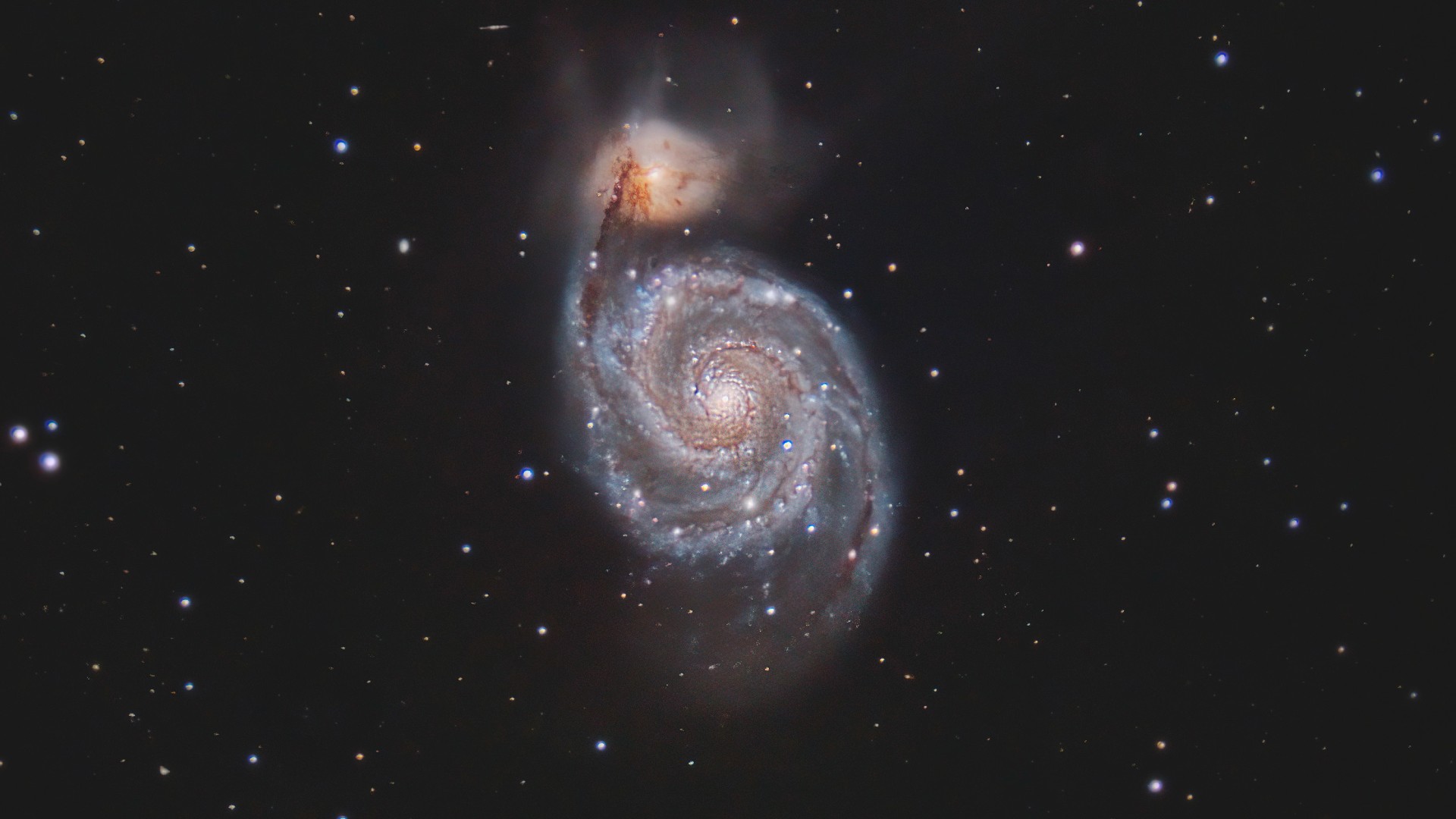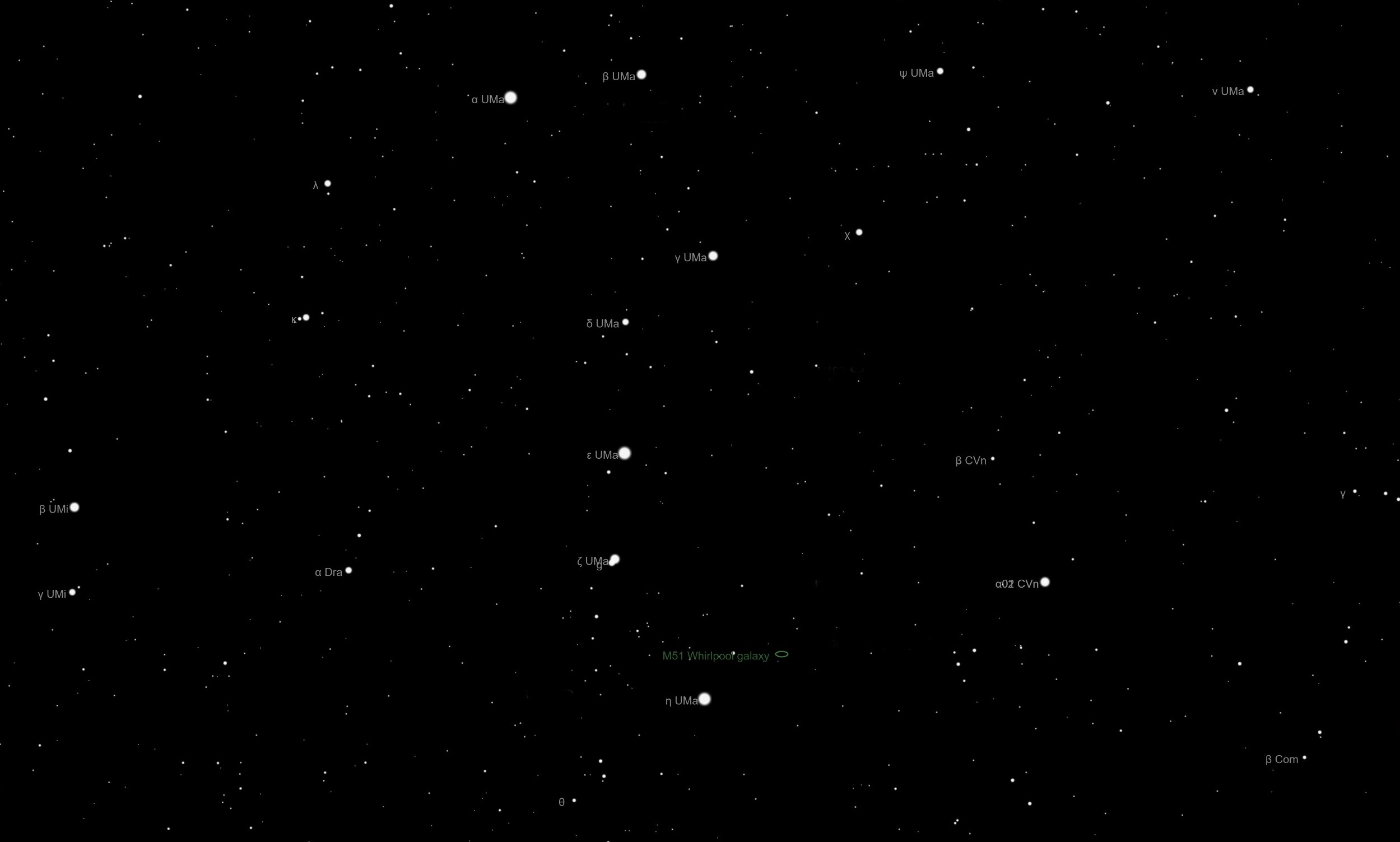Gaze into the mesmerizing Whirlpool Galaxy high in the sky tonight
Also known as Messier 51, this spiral staircase-shaped galaxy will be visible for most of the evening.

Friday (April 14) will offer skywatchers an opportunity to spot an incredible and breathtaking cosmic object: The Whirlpool Galaxy.
The Whirlpool Galaxy, also known as Messier 51 (M51), will be excellently positioned for observation in the evening sky over the next few weeks. But, the galaxy, shaped somewhat like a spiral staircase, will reach its highest point in the sky at around midnight local time on Friday, according to In the Sky.
From New York City, M51 will be visible for most of the night, becoming observable as daylight fades at around 8:41 p.m. EDT (0041 GMT) at around 45 degrees over the horizon to the northeast. At 12:57 a.m. EDT on April 15, (0457 GMT), M51 will reach its highest altitude for observers in New York, 83 degrees over the northern horizon, before disappearing at around 5:09 a.m. EDT (0909 GMT) when is about 45 degrees over the horizon to the northwest as it is washed out by the light of the rising sun.
Related: Whirlpool Galaxy: Exploding With Supernovas

Looking for a telescope to observe the Whirlpool Galaxy or anything else in the sky? We recommend the Celestron Astro Fi 102 as the top pick in our best beginner's telescope guide.
In the Sky gives M51's right ascension as 13h29m50s and its declination as 47°11'N. The galaxy, which has the alternative designation NGC 5194, was first discovered in October 1773 by Charles Messier.
At 31 million light-years from Earth in the constellation Canes Venatici, M51 will be faint with a magnitude of just 8.4, meaning it definitely won't be visible to the unaided eye. The Whirlpool Galaxy should be observable with a pair of skywatching binoculars or a small telescope in good viewing conditions with dark skies and clear weather, though.
To locate the Whirlpool Galaxy tonight, it might be easiest to first locate Ursa Major, home of the Big Dipper. The galaxy will be just northeast of the last star in the Dipper's "handle," Alkaid.
Get the Space.com Newsletter
Breaking space news, the latest updates on rocket launches, skywatching events and more!

It takes an instrument with some real observing power to see the 76,900 light-year-wide galaxy M51 in its full glory, however. For instance, when astronomers looked at M51 with the Hubble Space Telescope, they were able to see the galaxy's incredible arms of stars and gas, the most striking feature of spiral galaxies like this.
These spiral arms aren't just aesthetic features, however, as these waves of increased density pass over stars and gas, the gas gets compressed and this triggers star formation.
Astronomers think that the spiral arms of M51 may be especially pronounced because of a close encounter with a compact nearby galaxy, NGC 5195. This small yellow galaxy has been sailing past this cosmic whirlpool for hundreds of millions of years and appears to be tugging on one of the arms of M51. This galactic tug-o-war is also triggering star formation.
If you're hoping to catch a look at M51, our guides to the best telescopes and best binoculars are a great place to start. If you're looking to snap photos of the night sky in general, check out our guide on how to photograph the moon, as well as our best cameras for astrophotography and best lenses for astrophotography.
Editor's Note: If you take an image of M51 and would like to share it with Space.com's readers, send your photo(s), comments, and your name and location to spacephotos@space.com.
Follow us @Spacedotcom, or on Facebook and Instagram.
Join our Space Forums to keep talking space on the latest missions, night sky and more! And if you have a news tip, correction or comment, let us know at: community@space.com.

Robert Lea is a science journalist in the U.K. whose articles have been published in Physics World, New Scientist, Astronomy Magazine, All About Space, Newsweek and ZME Science. He also writes about science communication for Elsevier and the European Journal of Physics. Rob holds a bachelor of science degree in physics and astronomy from the U.K.’s Open University. Follow him on Twitter @sciencef1rst.









